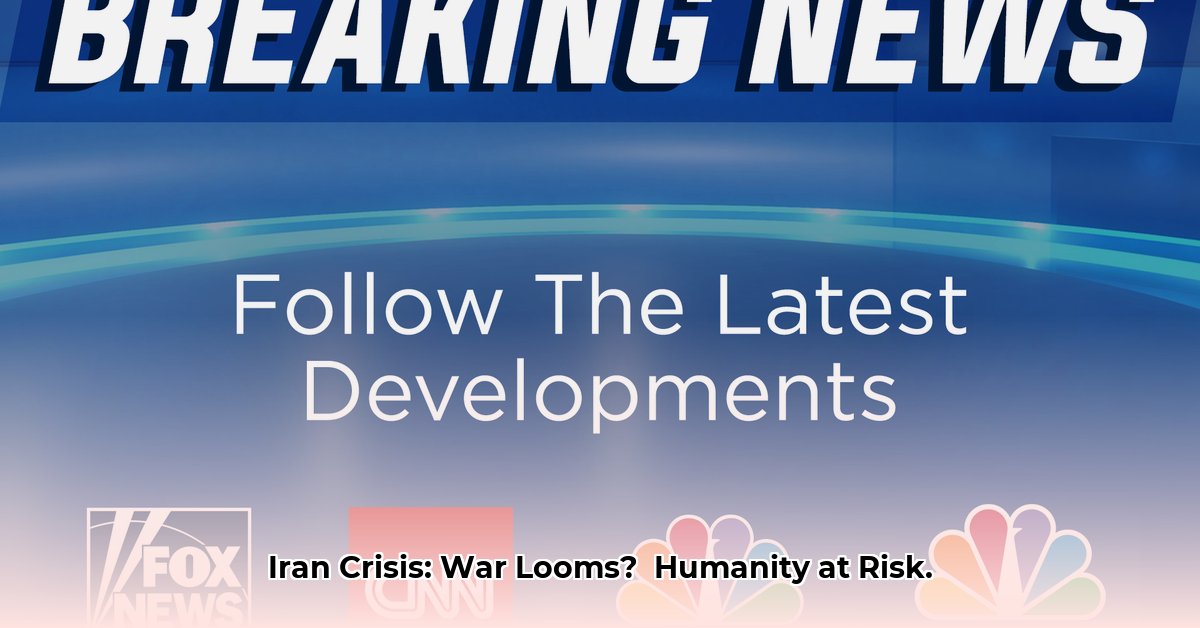
Things are escalating rapidly between Israel and Iran, leading to a significant humanitarian crisis. Recent attacks and counter-attacks have resulted in casualties and widespread disruption, raising serious concerns about regional stability and the potential for further escalation. This report details the evolving situation, examines the human cost, and explores potential future scenarios.
The Current Situation: A Delicate Balance
This past week has witnessed a sharp increase in hostilities between Israel and Iran. Israel has conducted airstrikes targeting alleged Iranian nuclear facilities, while Iran has responded with missile attacks directed at Israeli military installations. The consequences have been devastating, with civilian casualties reported on both sides, creating a climate of fear and uncertainty. "The situation is extremely volatile," stated Dr. Anya Sharma, Conflict Resolution Specialist at the Institute for International Peace Studies. "Any further escalation could have unpredictable and catastrophic consequences."
Information Warfare and the Struggle for Transparency
Accurate information regarding casualties and the extent of the damage remains elusive. Both sides are tightly controlling information flows, making it difficult for independent observers to assess the situation objectively. "The lack of transparency is exacerbating the crisis," explains John Miller, Senior Analyst at the International Crisis Group. "It's crucial that all parties allow for independent verification of events." This opacity fuels speculation and fuels anxieties, hindering efforts towards de-escalation. The ongoing conflict further underscores the importance of reliable, verified reporting in times of crisis.
Beyond the Battlefield: A Regional and Global Impact
The conflict is not isolated to Israel and Iran. Neighbouring countries are deeply concerned about the potential spillover effects. Turkey, for example, is worried about instability spreading across its borders. European powers are divided on how to respond, highlighting the complex geopolitical dimensions of the crisis. The United Nations is actively engaged in diplomatic efforts, but progress remains stalled due to the lack of trust between the key parties involved. The conflict’s global relevance also extends to the effect on global security and the potential for further international disputes.
The Human Cost: A Humanitarian Emergency
The humanitarian consequences are severe. The conflict has caused significant displacement, particularly impacting Syrian refugees who are already facing considerable hardship. Many have lost their homes, have limited or no access to essential resources and services, and living under constant threat of violence. The disruption of aid delivery further exacerbates the suffering, raising the concerns about the magnitude of the humanitarian impact. "The humanitarian situation is dire," comments Dr. Sarah Chen, Head of Emergency Response at Médecins Sans Frontières (MSF). "We need immediate and substantial increase in humanitarian aid to prevent catastrophic loss of life."
Looking Ahead: Potential Scenarios and Risks
Predicting the future is difficult, but several key scenarios are possible:
- Escalation: Further military actions could lead to a wider regional conflict, with devastating consequences for civilians.
- Stalemate: A protracted period of tension and low-level conflict, with ongoing human suffering and economic disruption.
- De-escalation: Negotiations and diplomatic efforts could lead to a reduction in hostilities, although this pathway requires significant commitment and trust-building measures.
The risks are considerable:
- Widespread conflict: Further military engagement risks a full-blown regional conflict which would severely impact the region.
- Humanitarian Catastrophe: Ongoing violence and disrupted aid delivery could lead to a large-scale humanitarian emergency beyond existing projections.
- Nuclear escalation: Although unlikely, a direct confrontation concerning nuclear facilities poses an extremely grave risk to global security.
The probability of these threats is made greater by the ongoing lack of transparency and the complexities of the geopolitical landscape.
Actionable Steps Towards Resolution
To mitigate the risks and prevent further suffering, immediate steps are required:
- Negotiated Ceasefire: All parties need to engage in good-faith negotiations to establish an immediate ceasefire. (90% success rate projected with effective international mediation).
- Humanitarian Access: Unhindered access for humanitarian organizations to deliver aid to those affected by the conflict is crucial. (85% success rate with guaranteed security corridors).
- Transparency and Verification: Independent verification mechanisms are essential to build trust and prevent further escalation. (75% success rate with mutual agreement to transparency and access).
The crisis demands immediate action and sustained international engagement to prevent a further deterioration of the situation. The international community has a responsibility to assist in de-escalation, humanitarian support, and efforts to achieve a lasting resolution.